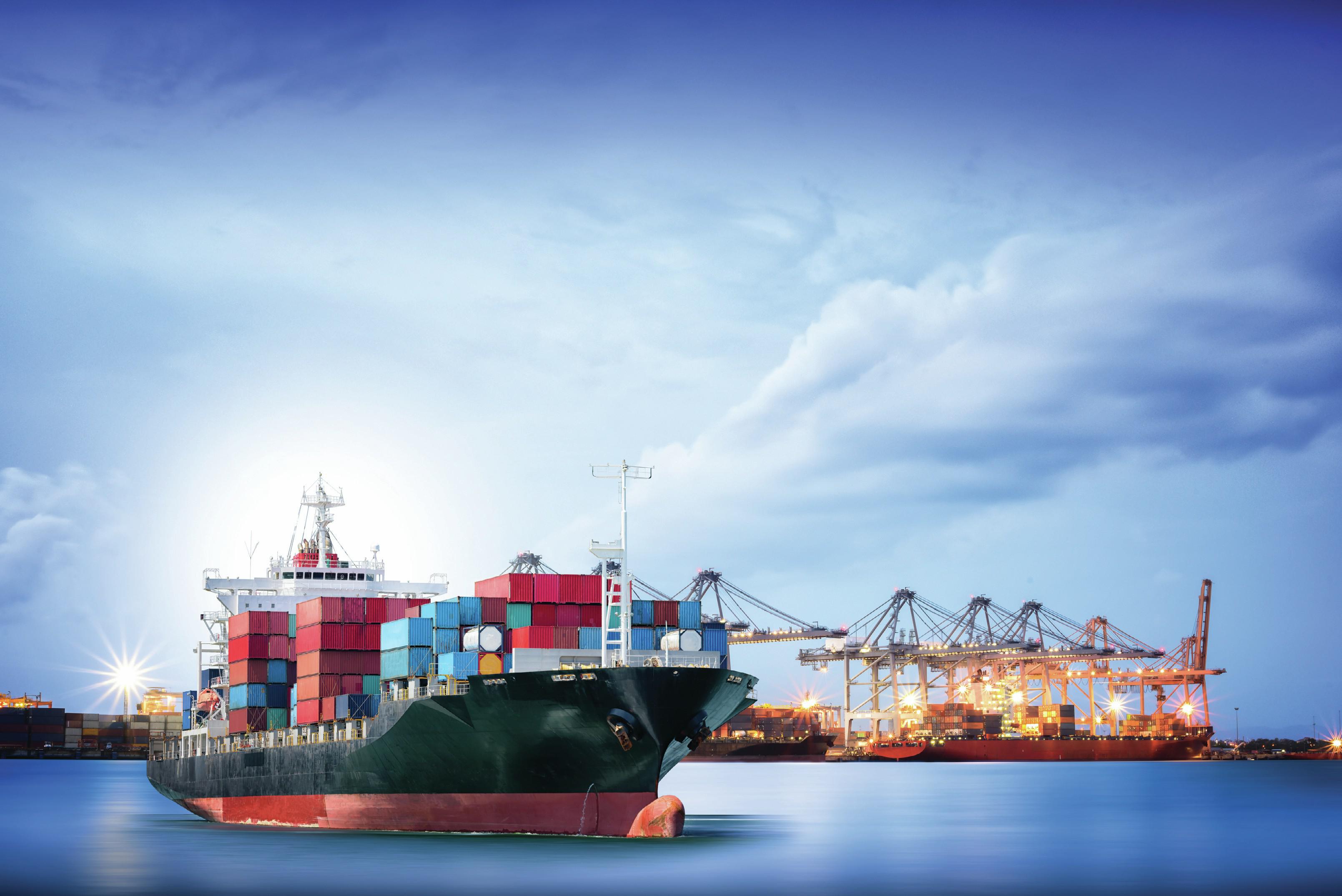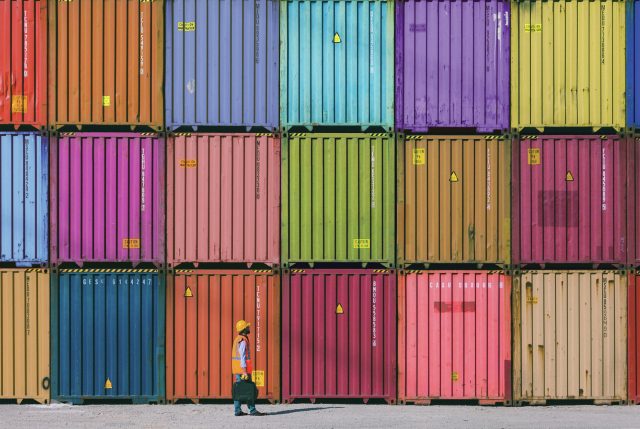This website uses cookies so that we can provide you with the best user experience possible. Cookie information is stored in your browser and performs functions such as recognising you when you return to our website and helping our team to understand which sections of the website you find most interesting and useful.
Bulk wine: smooth sailing?
While the bulk wine industry has not been immune to the trials of the wider industry, there is much cause for optimism, Arabella Mileham finds.

Bulk wine has never been more in demand. A dynamic sector that has seen huge expansion in the quality and breadth of choice on offer, its environmental and cost benefits have become even more prominent as the cost of-living crisis grows deeper.
Yet, at the same time, the sector has rarely faced more challenges, with global shipping in disarray, poor reliability and lumpy arrivals, and rising fuel and freight costs adding to exchange-rate volatility, particularly of sterling. In a world where the global economy is based on the movement of goods, where the movement itself is proving sluggish, how has bulk wine fared over the last year?
Despite acknowledging that in recent months “every tank had had some type of issue – from missing sailings, to going on the equivalent of a Cunard world cruise”, Andrew Porton, managing director of UK bottler and supplier Lanchester Wines, remains optimistic about the bulk market and the UK filling industry in general. It is, he notes, part of a long, illustrious tradition harking back to the great wine merchants of Liverpool and Bristol. “The expertise, and environmental benefits don’t go away,” he says.
Traditionally, bulk wine has been skewed to deep-sea destinations and the New World, but this is changing because of the challenges of the past 18 months. Porton notes that the increase of global shipping costs has resulted in people looking at bulk shipping for shorter lead times to better control supply, as well as mitigate the rising cost of freight.
“We’ve seen a great uplift in Spanish, French and Italian wine that has been brought into the UK, whereas five years ago, there would have been relatively little from those countries,” he says.
“For the rest of the world, there is a more compelling case to major on bulk from countries where the increases in shipping charges have been softer. So South Africa has been a relatively good source because as well as having a Pound that’s consistently on the same level as the Rand, the shipping has not gone up that much proportionately, and crossings are more reliable.”
Although originally centred on a narrow range of countries, bulk sourcing has become much wider, he argues. South Africa continues to offer great value and proximity to the European market – “year in year out, they do an amazing job, and the prices are always within a whisker of what they were in the previous vintage”, Porton points out – while the lighter 2022 vintage in “consistent” Spain did little to dent its supply.
SUPPLY CHAIN ISSUES
Supply-chain issues from Argentina have been trickier, with the country grappling with hyper-inflation, as well as logistical problems. “It’s a great pity because the wine and the country has an awful lot of potential, and the wine deserves better,” he says.
The challenges of getting wine out of Moldova following Russia’s invasion of Ukraine in February also seems to have improved – as initially freight forwarders were reluctant to head into Eastern Europe. “We had 14 containers due to load at the port of Odessa when the war started,” Kevin Wilson, buying controller at UK bottler and supplier Kingsland Drinks, says. “The good news is that we were able to return these containers to the winery, and have now established an alternative route to ship the wines securely.”
Horst Mueller, global head, VinLog at Kühne + Nagel, points out that both customers and retailers are sourcing wines from other countries of origin. “We know that many southern hemisphere countries have large stocks of bulk wine; we are now seeing this increasing again. The 2022 harvest in the US was short, therefore we expect US wineries to import a significant amount of base wines,” he added.
Australia is a case in point. Due to the tariffs imposed by the Chinese government on imported wines from the country, many bulk wineries in Australia have had to redevelop European markets, making pricing very attractive for red varietal wines in the UK. This in turn has put pressure on pricing of other sources of red wines, such as Chile. The country has produced some “terrific wines at keen prices”, Porton notes, but the surplus from Australia, the strength of the dollar, and rising cost of shipping has affected its competitiveness.
POOR HARVEST
In terms of white wines, the poor harvest in 2021 in New Zealand led to a rush for Sauvignon Blanc from countries such as South Africa and Chile, while a below average harvest in California drove many large US players to source additional volumes of generic white and Chardonnay. And this year ’s floods in New Zealand added to the lumpiness of shipping arrivals.
“We find today that the world is slightly short of white wines but more balanced for red wines,” Richard Lloyd, general manager of European operations and supply chain at The Park, the UK’s largest bottler, notes. The UK has seen a continued fall in wine sales, down by 8% by value and 10% by volume, according to Wilson at Kingsland Drinks, and it continues to be a challenging time for the industry. However, bulk wine pricing has remained stable from most countries.
“The wine market is polarising, with the middle sector being squeezed – the entry level continues to operate strongly,” he says. “The interesting sector is the premium area between £9 and £12. For that price you can get some great bulk wine from some really interesting regions.”
The UK government under Liz Truss’s short reign crashed sterling, resulting in currency volatility. This has led to increased challenges for suppliers, but the ability of larger importers, bottlers and retailers to hedge currency protects them against currency volatility and buys them about 12-18 months until that hedging position runs out.
What has proved potentially more serious is the ongoing disruption to global shipping that has wreaked havoc on supply lines in nearly every industry for the past 18 months. The global displacement of shipping containers following the pandemic has seen them stuck in the wrong country, erratic supplies with fewer sailings from certain countries leading to sharp spikes of stock, bottlenecks and congestion at ports. All this has played out against a backdrop of a huge increase in shipping costs – some trade lanes have seen freight rates quadruple, according to Richard Royans, director of bulk wine at Hillebrand Gori (a DHL company), although this has started to ease in recent months. Industrial action in the US and the UK have hardly helped ease the backlog.

According to Lloyd of The Park, global shipping reliability has remained at below 40% for over 18 months, and Royan argues that only around 30% of vessels are arriving on schedule. This has made it extremely difficult for supply-chain planning, with erratic transit times being experienced on the same routes.
The impact has perhaps been most acutely felt in the longer Old World supply lanes, Royan notes, as they are exposed to more port calls, and subsequently more delays in transit than other routes.
Barry Dick MW, beer, wines and spirits global bulk wine sourcing manager at Waitrose & Partners, agrees: “It has been a case of feast or famine with these containers coming in.”
He notes that until now, importers and bottlers haven’t had to build in 30% spare capacity “just in case”.
JUST IN TIME MENTALITY
The availability of equipment, schedule reliability and extended transit times is starting to challenge this “just-in-time concept” of recent years, according to Horst Mueller, who notes that in the UK, most third-party bottlers “do not have tank-storage capacity, which has had a negative impact on some importers as containers have had to remain on the quay for extended periods”.
As a result, there is lot of work going on behind the scenes to ease the inconsistent nature of wine shipments, including increasing storage capacity in the UK and building greater bottling capacity. “It has meant all supply chains have had to reflect on the design and inventory holding at different points along the journey,” Lloyd agrees.
There are, of course, upsides to all of this – the falling demand for big-ticket items such as cars and fridges due to the cost-of- living crisis has created opportunities for wine to pick up the slack, while poor reliability in general has meant shipping in bulk “is even more beneficial when reviewing customer-service levels with product supply, given the flexibility it offers once in market”, Lloyd says.
The fact remains that it is possible to fit more than three times as much bulk wine on a shipping container versus bottled ‘finished’ product, significantly increasing the financial drivers for bulk. Even with the increase in dry goods prices, bulk remains a competitive option.
“When this is coupled with the sustainability benefits plus the now accepted quality benefits, more and more businesses are looking to switch their product to bulk shipment with filling in country of sale,” Lloyd says.

SUSTAINABILTY NOUS
Enhanced sustainability has been an “unstoppable trend” in the past few years Otilia Romero de Condes, CEO, World Bulk Wine Exhibition, argues. “This issue has shifted from a ‘greenwashing’ matter for companies to an actual and very serious concern for everyone,” she says. “We cannot continue to export wines in bottles if they are made for everyday drinking. It’s just not sustainable or environmentally ethical.”
And retailers are increasingly agreeing, as seen by Waitrose’s appointment of Barry Dick MW to boost its commitment to bulk wine and UK bottling, while UK retailer Laithwaites recently announced it was intending to double its use of bulk over the next few years.
Similarly, producers such as Argentina’s Domaine Bousquet have increased their focus on bulk shipments, bottling their premium range in the UK from the start of 2022, with the majority of this range to be bottled in the UK by the end of the year. Several lines in its US portfolio are also bottled in California. This, the company says, puts it on target to become a carbon-neutral winery by 2025.

OPPORTUNITIES
According to Wilson at Kingsland Drinks, buyers need to be braver and look outside the mainstream varietals. He points out that Kingsland is one of the largest exporters of wine from Chile in both bulk and bottled wines.
“Last year we had great success with a Sangiovese from the Elqui Valley, and our biggest success was in importing a Criolla from Argentina; this received rave reviews by many wine journalists and influencers and was featured on the BBC Saturday Kitchen TV programme, so we recommend buyers be brave and make some interesting additions to their wine shelves,” he says.
Porton of Lanchester Wines agrees, noting that there are a lot of people doing new things. “If you’re not careful you do kind of believe that you’re in the Malbec/Sauvignon/white Zinfandel business, whereas there’s a huge world of wine out there,” he argues. “We need to see a diversification of styles and varieties and premiumisation.”
The company, for example has seen significant sales of Falanghina from Puglia, and premium Côte de Gascon white wines. He feels there is an opportunity to improve the presentation of the packaging too. “I think the biggest opportunity is the premiumisation and diversification of liquid, as well as premiumisation of the actual finished bottle,” he says.
The stigma that long held back bulk wine has also gone, and its rising quality is clear, with the skill, knowledge and equipment of UK bottlers also having improved dramatically, Barry Dick notes.
The appeal is clear, Romero de Condes, says: “Bulk wine is very popular because it is at the core of current market trends: sustainability, alternative packaging methods, bottling at the destination.”
These trends, she argues, have made bulk wine one of the most creative channels in the industry. But she warns there’s no room for complacency. “The world has changed, and wineries must be flexible and capable of adapting to what the market demands,” she notes. “De-alcoholised wines, alternative packages, new consumers, and rather sophisticated oenological products are on the rise.”

